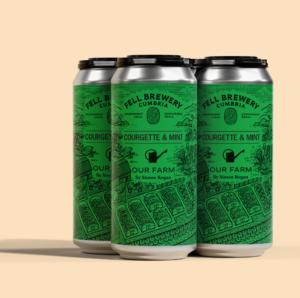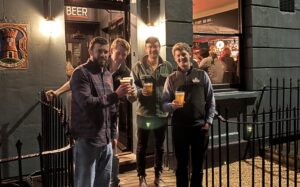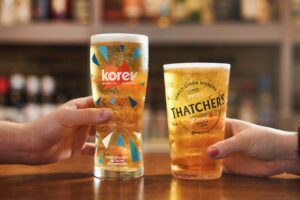Recent figures show value sales of low/no alcohol beer grew £5.9m (20.5%) to £34.7m over 12 months, the highest growth in 5 years (Nielsen to July 2017). This has been heavily influenced by the movement towards “mindful drinking” (much a recognition that we don’t always have to get smashed all the time) and that it’s actually possible to not make alcohol-free beer taste like sweet wort water, in large part thanks to great work done by some German breweries and the likes of Mikkeller, Pistonhead and Big Drop in the UK. I’m looking to continue the charge with my brother Tom at my new company, Infinite Session.
Following this recent growth and attention, the Government have recently started a public consultation on the legal descriptors used for these drinks (in large part thanks to Club Soda, the leading promoter of the category).
At present, to be “Alcohol-Free” the beer should be 0.05% ABV or below, whilst products with 0.5% and less should be called “De-Alcoholised” (though many products including ours don’t even have alcohol removed). On the contrary, products from the EU below 0.5% (many widely distributed in the UK) can be 0.5% and labelled “alcohol free” or “alkoholfrei”. Confusing AF. Particularly as the same rules as the EU exist in many other countries in the world, including Australia and the US (where it’s called “non-alcoholic”).
Club Soda’s aim is to have the government clear up the rules and align us with the rest of the world so that we’re less confusing for consumers, giving them accurate information and yes, promoting the category, which is fairly certain to only have positive benefits for society.
However, this wouldn’t be real life without agendas getting in the way of common sense. Following the launch of the consultation, we’ve had public opposition from Steve Magnall, the chief executive at St Peter’s Brewery, a producer of a range of 0.05% alcohol beers. Steve is against a simplification of labelling laws, his reasoning being “we’ve put time, effort and money into producing a zero alcohol range of beers (they’re actually still 0.05%), so why should a 0.5% beer be branded as zero alcohol when it isn’t.”
In situations like these its best to place the facts first and where better to go for them than Germany, where “alkoholfrei” (<0.5%) beers have long passed €1bn in sales and the national Olympic team are heralding it’s contribution to their recent success.
In typical fashion, the Germans have carefully studied the suitability of the 0.5% and alcohol-free claim and provided conclusive evidence. Studies show that consuming 0.5% beer has “no physiological” effect on the body.
The Germans have a zero tolerance limit on new drivers in and yet 0.5% beer can still be consumed in large quantity because it has no effect, it’s a “trace amount” (much like gluten-free beer may contain a trace of gluten: <20ppm).
Europe’s largest university clinic, Universitätsmedizin Berlin, has also approved its consumption during pregnancy. The body already has a permanent blood alcohol content and many everyday foods contain similar or more alcohol, including brown bread, apple juice and (ripe) bananas. Common sense has prevailed and consumers are given a great tasting product that is safe and healthy.
Steve continued in his argument, “Someone wishing not to drink alcohol doesn’t want a 0.5% ABV beer, that would be like feeding a vegetarian a tiny bit of thinly cut ham.” Now, this may be ignorance above malice, but this comparison is desperate, misleading and down-right hilarious. This is self serving nonsense and does nothing but inhibit everyone’s future potential. The difference between a 0.05% and 0.5% in terms of taste, texture and flavour is really that significant.
My message back is clear: the work has already been done, let’s not reinvent the wheel. Let’s put agendas to one side and base this on the facts: 0.5% is safe because it has no impact on the body. Instead, lets’s make it easy for consumers to pick an alcohol-free, for brewers to experiment with new flavours and styles, and for retailers to display our ranges. Let’s focus our efforts on working together to build this category to have the impact that we know it can, not limit it and stifle our potential. Just like it has in Germany and the rest. A rising tide lifts all boats.









